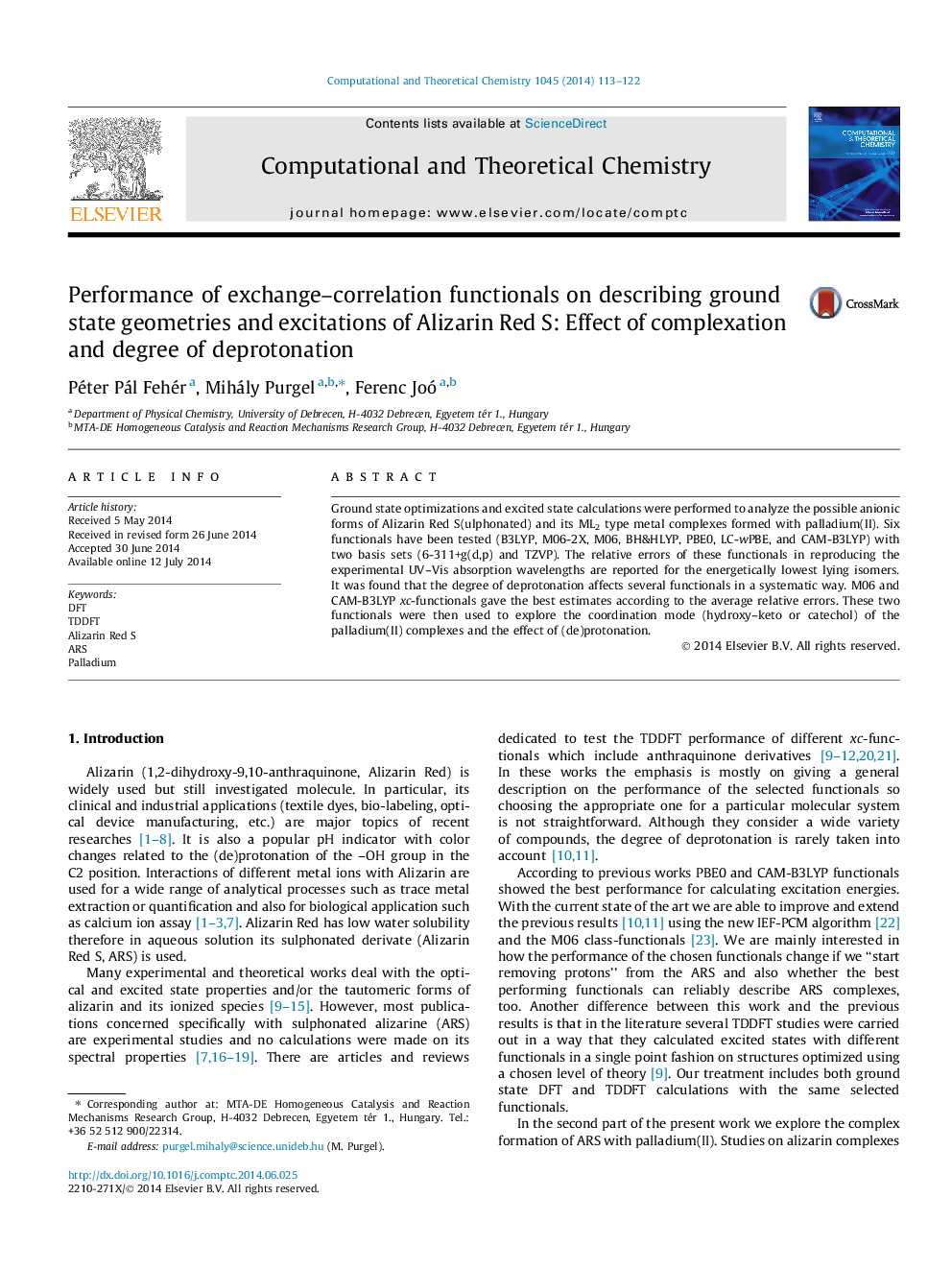| Article ID | Journal | Published Year | Pages | File Type |
|---|---|---|---|---|
| 5393572 | Computational and Theoretical Chemistry | 2014 | 10 Pages |
â¢Geometries of the mono-, di- and trianionic Alizarin Red S isomers were calculated.â¢TDDFT performance of seven functionals were tested on these structures.â¢The degree of (de)protonation was found to have a major impact on the errors.â¢M06 and CAM-B3LYP gave the best estimates to experimental results.â¢The coordination modes of Pd-ARS complexes were investigated.
Ground state optimizations and excited state calculations were performed to analyze the possible anionic forms of Alizarin Red S(ulphonated) and its ML2 type metal complexes formed with palladium(II). Six functionals have been tested (B3LYP, M06-2X, M06, BH&HLYP, PBE0, LC-wPBE, and CAM-B3LYP) with two basis sets (6-311+g(d,p) and TZVP). The relative errors of these functionals in reproducing the experimental UV-Vis absorption wavelengths are reported for the energetically lowest lying isomers. It was found that the degree of deprotonation affects several functionals in a systematic way. M06 and CAM-B3LYP xc-functionals gave the best estimates according to the average relative errors. These two functionals were then used to explore the coordination mode (hydroxy-keto or catechol) of the palladium(II) complexes and the effect of (de)protonation.
Graphical abstractDownload full-size image
